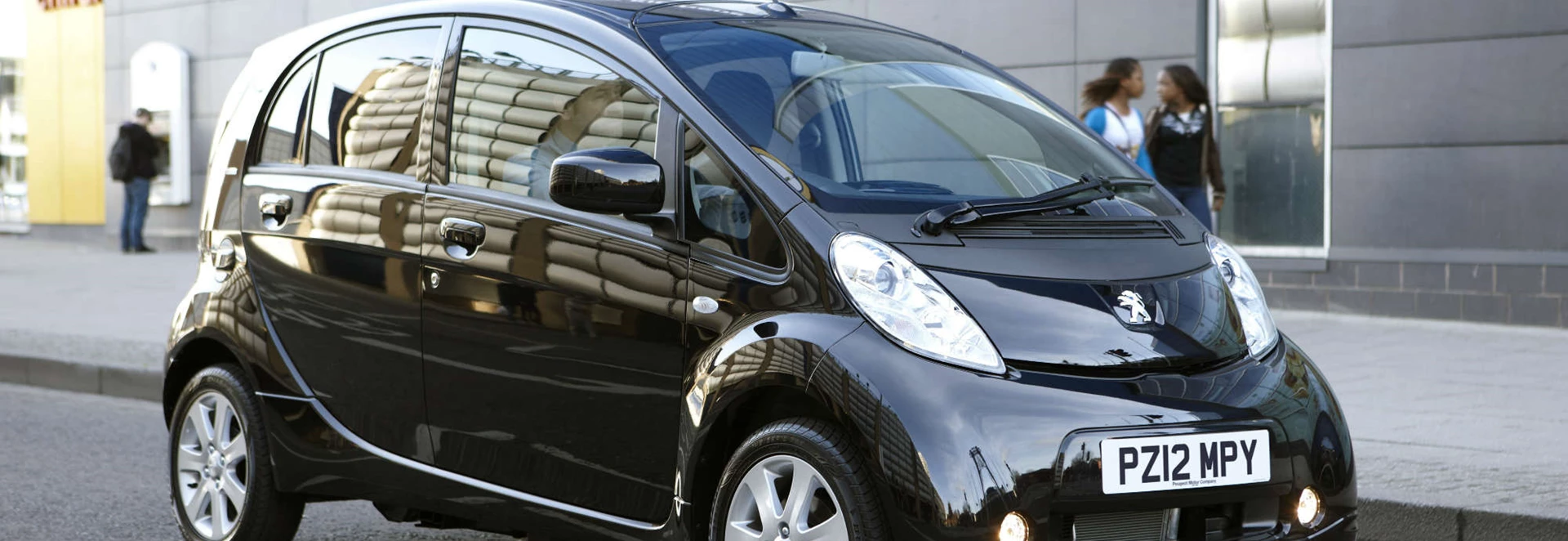One result of an agreement involving sister companies Citroen and Peugeot in France and Mitsubishi in Japan was that all three would sell identical, though differently badged, electric city cars. The core model is the Mitsubishi i-MiEV, and Peugeot's version is called the iOn.
Like the similar Citroen C-Zero, neither of them has been popular, and the cars are no longer in production, but a few remain in stock. While they are all very good at what they do, the essential problem is the price, which is over £20,000 even with UK Government assistance.
The iOn is available only in one form, with a very small number of optional extras. It has an exceptionally tight turning circle, and as with all other electric vehicles the transmission is automatic. All you have to do in order to get going is select forward or reverse gear and press the accelerator pedal.
Performance
The electric motor isn't particularly powerful, but the iOn's very low weight means that it will accelerate from 0-62mph in 15.9 seconds, or about the same as a supermini with a very small engine. 0-30mph takes just under six seconds, which is as much as you're ever going to need in town.
The top speed is 81mph, so motorway driving isn't out of the question. In fact, the iOn can keep up with surrounding traffic quite well, but only if you drive it more or less flat-out. This will do great damage to its range, which is quoted as being 93 miles starting with a full battery charge if you drive gently enough.
Ride and Handling
The ride is good, and the low centre of gravity (the electric motor is mounted underneath the boot floor) makes it handle well on country roads which might not at first seem to be the iOn's home territory.
In town, the iOn is extremely easy to drive. The car’s incredibly small turning circle allows you to turn through 180 degrees in spaces which would require at least one piece of reversing in most other cars. The ride is good, and the low centre of gravity (the electric motor is mounted underneath the boot floor) makes it handle well on country roads which might not at first seem to be the iOn's home territory. It’s almost flat sides mean that over 60mph it can be seriously affected by crosswinds and the draught from lorries, but holding it in a straight line isn't difficult.
Interior and Equipment
When the iOn first came to Britain it was available only on a lease basis. Peugeot abandoned that policy, and you can now buy the car outright.
Euro NCAP has not crash tested the iOn, but in 2011 it gave a four-star rating to the identical Mitsubishi i-MiEV. Although scored poorly for pedestrian protection, there is plenty of equipment to keep the occupants safe, including front, side and curtain airbags and Emergency Brake Assist. These are joined on the equipment list by alloy wheels, electronic climate control, all-round electric windows, front and rear foglights and reclining rear seats. The only optional extras are a heated driver's seat and door mirrors for £155, metallic paint for £450 and pearlescent paint for £550, either of the last two being essential if you don't like the standard solid Antarctic White. The iOn will carry four adults without much trouble, but the luggage capacity is very limited at 166 litres, nearly 90 less than some other city cars provide. With the rear seats folded the available volume increases to 860 litres.
Cost
With no CO2 emissions, the iOn costs nothing to tax and is exempt from the London congestion charge.
As is normal with electric cars, running costs are exceptionally low. With no CO2 emissions, the iOn costs nothing to tax and is exempt from the London congestion charge. Anyone who happens to get the iOn as a business car will find themselves in the lowest bracket for Benefit In Kind taxation. The problem is the price. Peugeot charges £26,216, and although the Government's Plug-in Car Grant brings this down to £21,216, that's still more than double what you'd pay for the most expensive model in other city car ranges. It would be possible to argue that you could get a lot of this back at resale time. However, since so few people have ever bought a new iOn it's unlikely that anyone would ever pay a large amount of money for a used one. Most of the iOn is covered by a warranty that lasts for three years or 60,000 miles. The drivetrain, including the battery pack, officially has a five-year warranty, but it expires at 40,000 miles if you cover that distance within the stated time period. This seems an odd discrepancy, but the chances of anyone averaging more than 8,000 miles per year could probably be described as slim.
Our Verdict
The iOn is so good in urban situations that you can find yourself wondering why anyone who drives in them would ever choose anything else, other than a C-Zero or an i-MiEV. The problem is that the cost of the powertrain sends the list price to stratospheric levels, and no matter how capable the iOn is in its natural environment it was always going to struggle against cheaper petrol-run city cars which can be driven so much further and refuelled so much more quickly.




